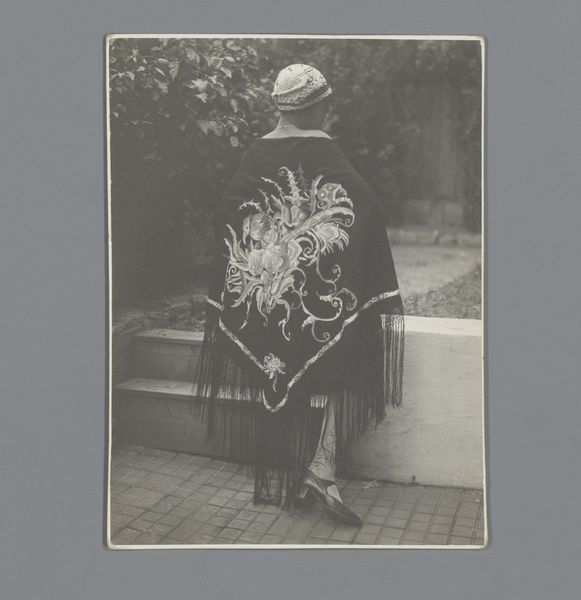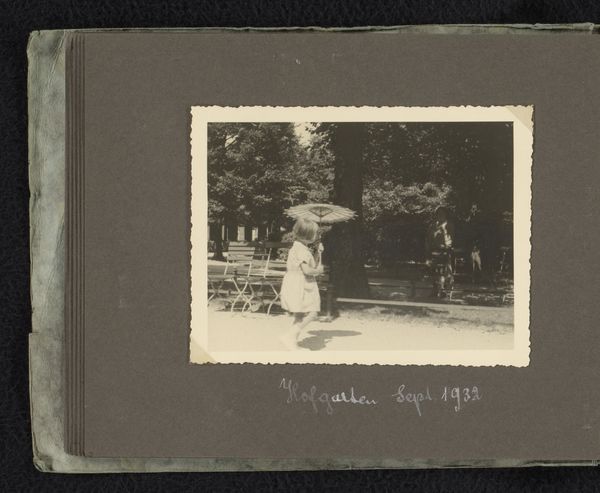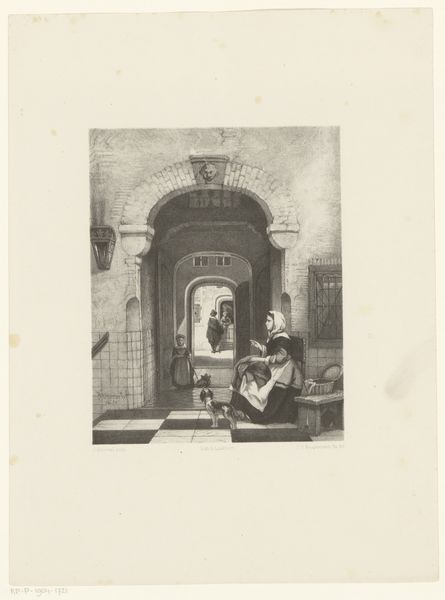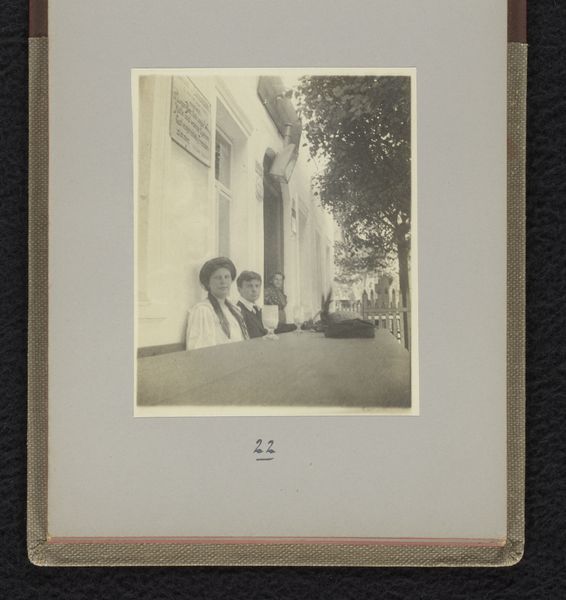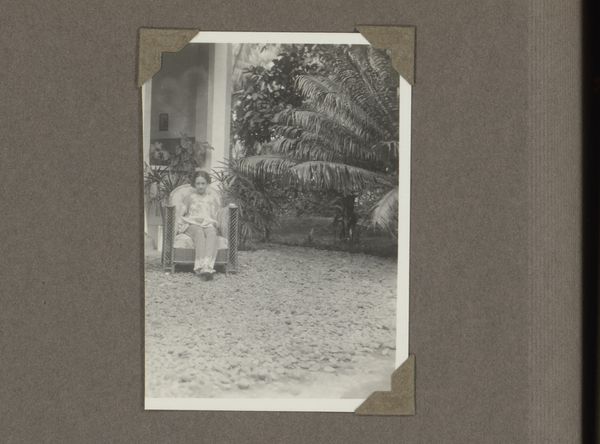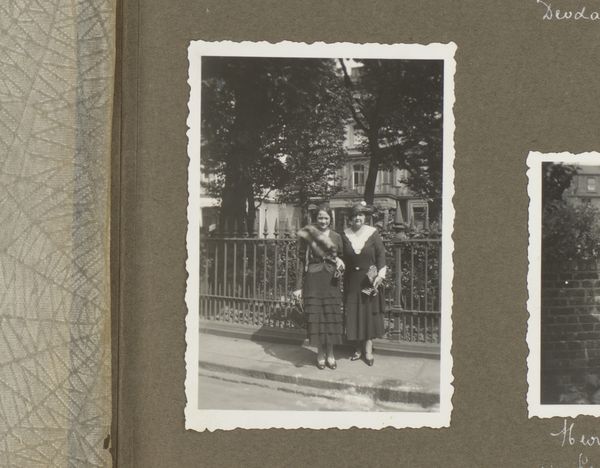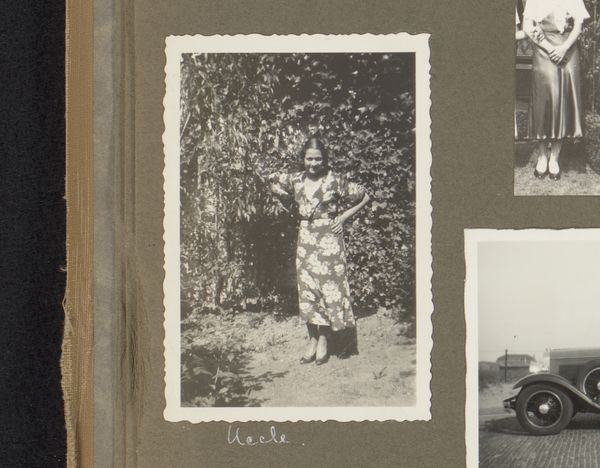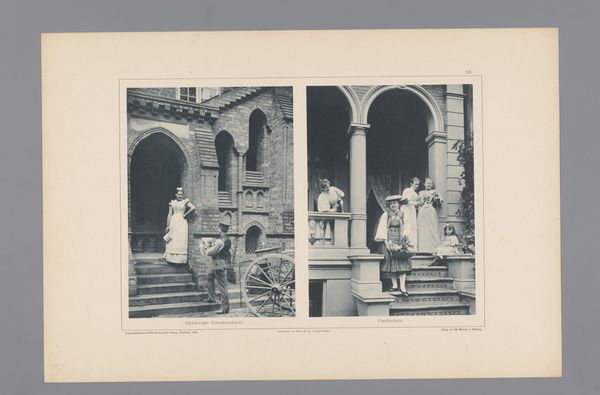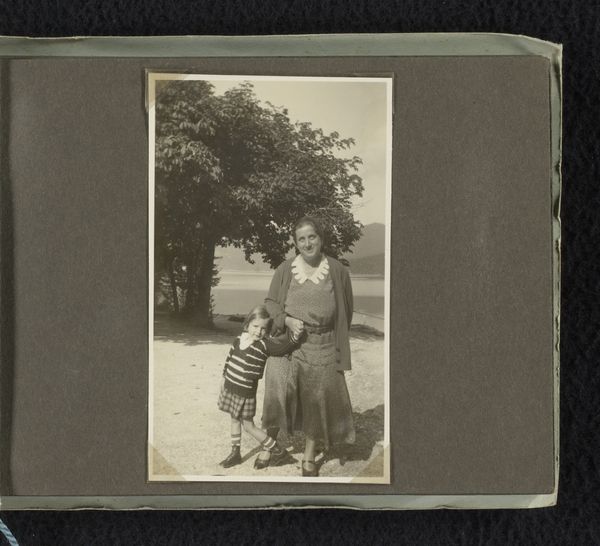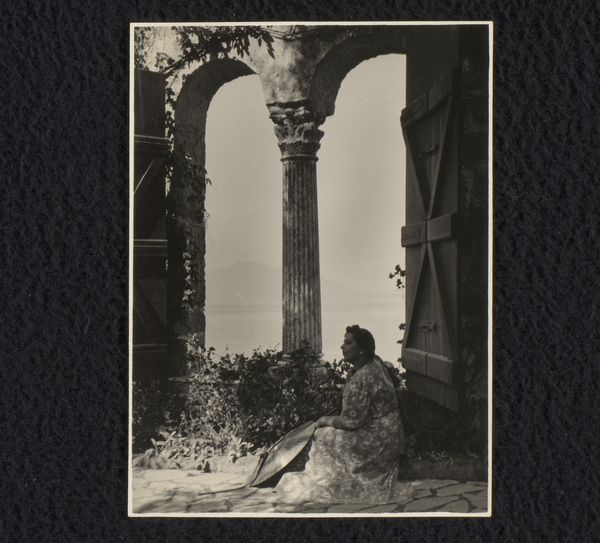
Portret van Wilhelmina van Zijll de Jong voor de Royal Academy of Arts, Londen 1932 - 1936
0:00
0:00
photography
#
portrait
#
pictorialism
#
archive photography
#
photography
#
historical photography
#
old-timey
#
cityscape
Dimensions: height 88 mm, width 61 mm
Copyright: Rijks Museum: Open Domain
Curator: There's a touching formality about this piece. "Portret van Wilhelmina van Zijll de Jong voor de Royal Academy of Arts, London," probably taken between 1932 and 1936. It’s a black and white photograph, presented like a postcard, and something about it feels incredibly precious. Editor: I'm struck by the stark contrast between the imposing architecture of the Royal Academy and the rather unassuming woman in front of it. It speaks volumes about class and access during that period. Is she visiting? Is she somehow connected to the Academy? The context feels critical here. Curator: It does have that air of someone positioned just so, self-consciously in front of a grand backdrop. The “Summer Exhibition” banner overhead suggests she’s visiting, perhaps to admire the art or, daringly, to dream of exhibiting her own work there someday. Wilhelmina herself looks almost luminous in contrast to the severe architecture, doesn't she? A bit of soft-focus pictorialism enhancing that ethereal quality. Editor: Luminous, yes, but I see something else, too. A hint of nervousness perhaps, a quiet determination. The societal pressures on women to conform, to find their place within these institutions… this photograph becomes a tiny rebellion, staking a claim to this space. It's like she's announcing, "I am here." Curator: I like that! Yes, maybe it's not just admiration, but aspiration, and just the slightest touch of defiance hidden within the soft lighting and the carefully posed stillness. Do you think the flower in her arms has any symbolic meaning? It feels consciously placed, rather like Ophelia holding her flowers... perhaps suggesting something a bit deeper about femininity? Editor: Potentially, the floral imagery also situates Wilhelmina as part of a larger art historical tradition of women depicted in conjunction with nature—often as a way to both idealize and contain them. But flowers can also signal agency, rebirth and resistance. Thinking of feminist critiques of this visual language, what can this photograph suggest? Curator: That friction between containment and quiet rebellion… I think you’ve nailed it! And you're right, we're projecting narratives onto her, trying to read the untold story held within this simple snapshot. It almost feels voyeuristic. Editor: It’s a testament to photography's power that it can spark such conversations, to expose those untold stories within singular images. Every image a complex intersection of the personal and the political. Curator: Yes, and it's incredible how one seemingly simple picture can have so much depth if you simply bring something of yourself to it! Editor: Indeed. A poignant reminder to look beyond the surface and engage critically with the narratives these images present.
Comments
No comments
Be the first to comment and join the conversation on the ultimate creative platform.
